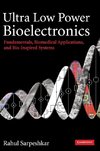
-
 Anglický jazyk
Anglický jazyk
COMPRESSIVE STRENGTH OF CONCRETE MADE FROM DIFFERENT AGGREGATES
Autor: Ibrahim Abdulrazaq
The study used a 1:2:4 mix design and a water-cement ratio of 0.5. Wooden square cubes of dimensions 100 x 100 x 100 mm were employed, resulting in 42 concrete cubes.Tests were conducted to assess particle size distribution, specific gravity, bulk density,... Viac o knihe
Na objednávku, dodanie 2-4 týždne
40.68 €
bežná cena: 45.20 €
O knihe
The study used a 1:2:4 mix design and a water-cement ratio of 0.5. Wooden square cubes of dimensions 100 x 100 x 100 mm were employed, resulting in 42 concrete cubes.Tests were conducted to assess particle size distribution, specific gravity, bulk density, aggregate impact value, aggregate abrasion value, and compressive strength at 7th and 28th days of curing. Notably, after 7 days, compressive strength results showed that concrete with a 10% iron fillings replacement (18.5 N/mm²) had a higher average strength than concrete with 100% river sand (17.6 N/mm²). However, as the percentage of iron fillings increased to 20% (9.8 N/mm²) and 30% (7.1 N/mm²), the compressive strength decreased. On the other hand, concrete with sawdust replacements at 10% (3.7 N/mm²), 20% (1.4 N/mm²) and 30% (0.5 N/mm²) exhibited significantly lower load-bearing capacity. These trends persisted at the 28th day, with the compressive strength decreasing with increasing percentages of iron fillings (10%: 20.3 N/mm², 20%: 11.2 N/mm², 30%: 11.6 N/mm²) & sawdust (10%3.4 N/mm², 20%: 2.3 N/mm², 30%: 1.4 N/mm²). The findings suggest that a low percentage of iron fillings can be used in combination with river sand.
- Vydavateľstvo: LAP LAMBERT Academic Publishing
- Rok vydania: 2024
- Formát: Paperback
- Rozmer: 220 x 150 mm
- Jazyk: Anglický jazyk
- ISBN: 9783659599071











 Nemecký jazyk
Nemecký jazyk 
